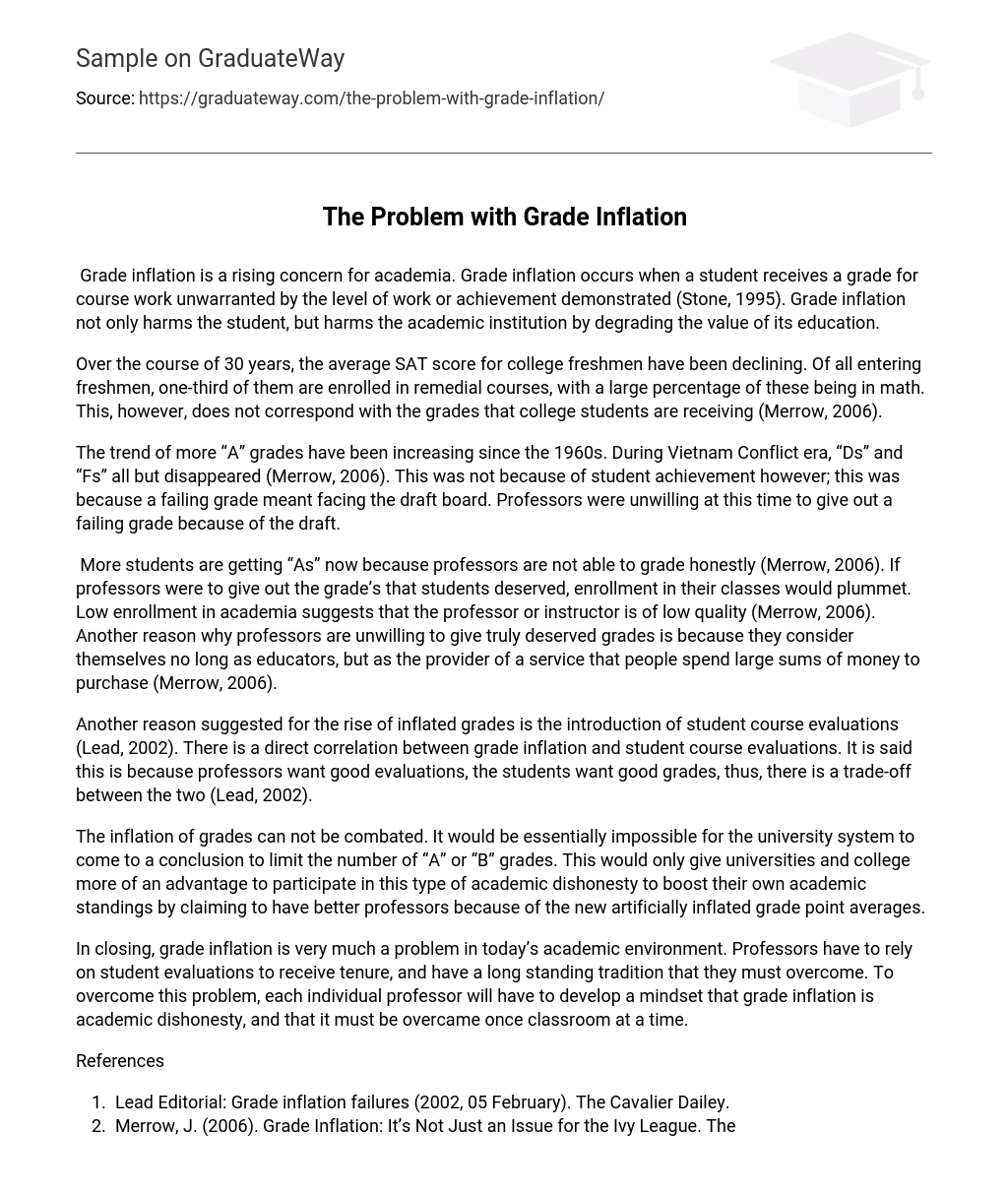Grade inflation is a rising concern for academia. Grade inflation occurs when a student receives a grade for course work unwarranted by the level of work or achievement demonstrated (Stone, 1995). Grade inflation not only harms the student, but harms the academic institution by degrading the value of its education.
Over the course of 30 years, the average SAT score for college freshmen have been declining. Of all entering freshmen, one-third of them are enrolled in remedial courses, with a large percentage of these being in math. This, however, does not correspond with the grades that college students are receiving (Merrow, 2006).
The trend of more “A” grades have been increasing since the 1960s. During Vietnam Conflict era, “Ds” and “Fs” all but disappeared (Merrow, 2006). This was not because of student achievement however; this was because a failing grade meant facing the draft board. Professors were unwilling at this time to give out a failing grade because of the draft.
More students are getting “As” now because professors are not able to grade honestly (Merrow, 2006). If professors were to give out the grade’s that students deserved, enrollment in their classes would plummet. Low enrollment in academia suggests that the professor or instructor is of low quality (Merrow, 2006). Another reason why professors are unwilling to give truly deserved grades is because they consider themselves no long as educators, but as the provider of a service that people spend large sums of money to purchase (Merrow, 2006).
Another reason suggested for the rise of inflated grades is the introduction of student course evaluations (Lead, 2002). There is a direct correlation between grade inflation and student course evaluations. It is said this is because professors want good evaluations, the students want good grades, thus, there is a trade-off between the two (Lead, 2002).
The inflation of grades can not be combated. It would be essentially impossible for the university system to come to a conclusion to limit the number of “A” or “B” grades. This would only give universities and college more of an advantage to participate in this type of academic dishonesty to boost their own academic standings by claiming to have better professors because of the new artificially inflated grade point averages.
In closing, grade inflation is very much a problem in today’s academic environment. Professors have to rely on student evaluations to receive tenure, and have a long standing tradition that they must overcome. To overcome this problem, each individual professor will have to develop a mindset that grade inflation is academic dishonesty, and that it must be overcame once classroom at a time.
References
- Lead Editorial: Grade inflation failures (2002, 05 February). The Cavalier Dailey.
- Merrow, J. (2006). Grade Inflation: It’s Not Just an Issue for the Ivy League. The Carnegie Foundation for the Advancement of Teaching. Retrieved May 13, 2007, from http://www.carnegiefoundation.org/perspectives/sub.asp?key=245&subkey=576
- Rojstaczer, S. (2003, 28 January). Where All Grades Are Above Average. The Washington Post, A21.
- Stone, J. E. (1995). Inflated Grades, Inflated Enrollment, and Inflated Budgets: An Analysis and Call for Review at the State Level. Education Policy Analysis Archives, 3 (11), June 26, 1995.





